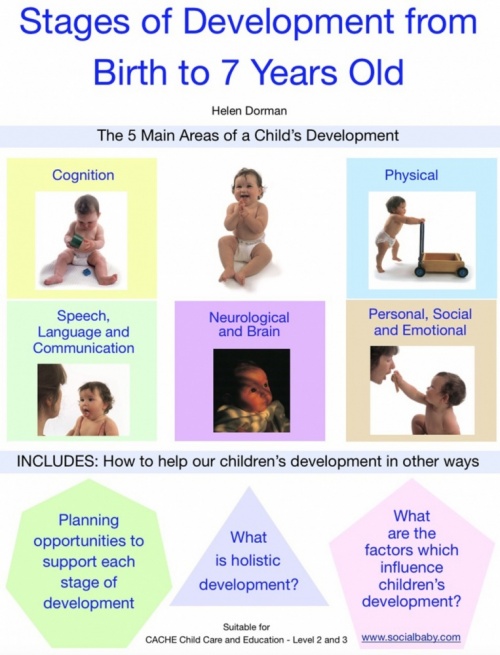PhysicalThe Stages and Sequences of Physical Development from Birth to 7 Years Old There are 2 main areas of physical development; gross and fine motor skills. The former uses a combination of large body muscles e.g. for walking and jumping, and the later for smaller more precise movements e.g. drawing and sewing. Physical development is dependent on the growth of the spine and this happens in three stages. 1. The primary curve – At birth a newborn baby’s spine is a total curve (kyphotic), as when in the womb. This is why a baby’s head is very floppy. 2. Secondary curve-1 – Within the first 6-8 weeks the lower cervical curve of the spine occurs enabling the babies to extend their necks and begin to have more control over their heads. 3. Secondary curve-2 – The secondary lumbar curve develops with standing enabling the spine to straighten. These curves affect the position of the centre of gravity. In an infant it is around the 12th thoracic vertebra and in adult it has dropped to the 5th lumbar vertebra. This makes walking very unstable for infants. | At Birth Gross Motor Skills Fine Motor Skills | When on back keeps head to one side, arm and legs flexed with knees apart, soles of feet facing inwards (supine) When placed on front head turns to the side (prone) When pulled to a sitting position, the head lags When held under chest (ventral suspension), the head stays in the same plane as the back Kicks legs alternatively with large jerky movements Stares at a bright light Drawn to human faces Hands closed with thumbs turned in, opening when active– may open during feeding Take fists to mouth to suck on | | | | For more... download £5.99 

|